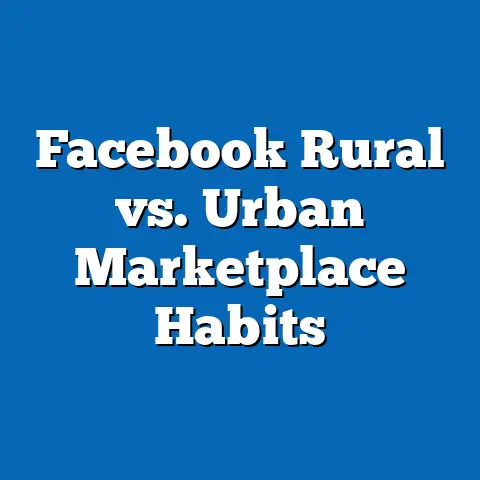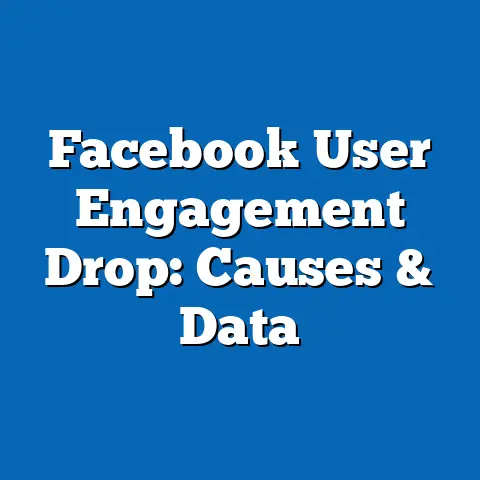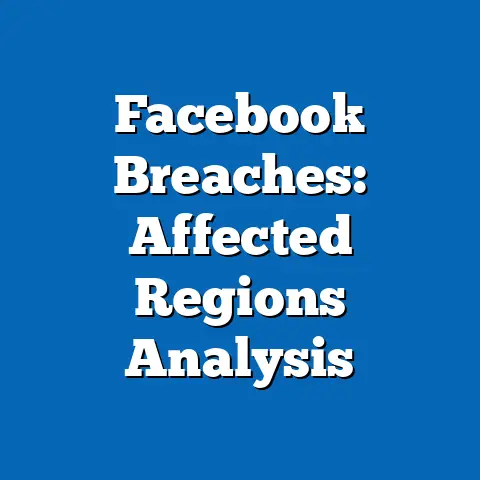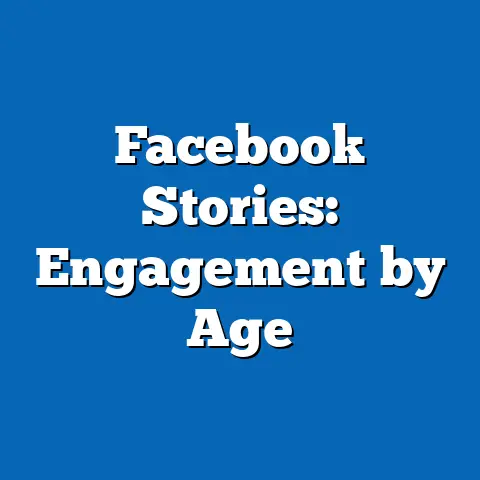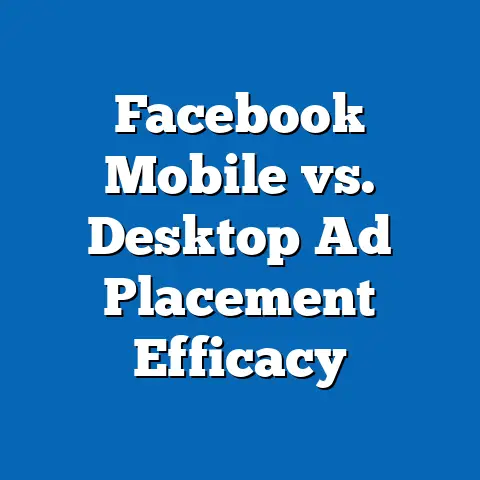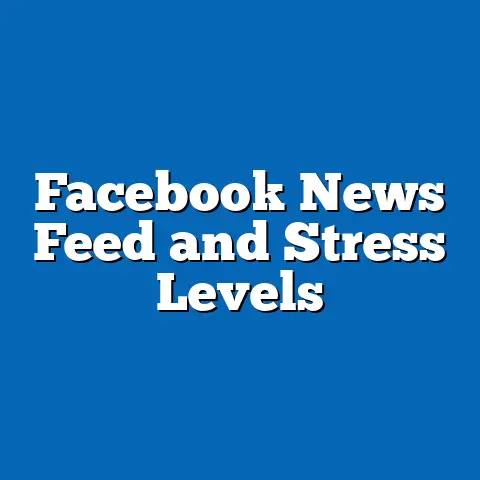Indiana Small Businesses on Facebook: Growth Data
At first glance, allergies and small businesses on social media platforms like Facebook might seem unrelated. However, both reflect how environmental and societal factors shape behavior and economic activity. Allergies, a growing health concern across the United States, impact workplace productivity, consumer behavior, and even how small businesses market their products or services—especially in states like Indiana, where seasonal allergies are prevalent due to agricultural activity and diverse climates.
According to the Asthma and Allergy Foundation of America (AAFA), allergies affect over 50 million Americans annually, making it the sixth leading cause of chronic illness in the U.S. The AAFA’s 2023 Allergy Capitals report ranks Indianapolis, Indiana, among the top 50 most challenging cities for allergy sufferers, driven by high pollen levels and mold counts. This health concern translates into economic impacts, with the AAFA estimating that allergies cost the U.S. economy $18 billion annually due to missed workdays, medical expenses, and reduced productivity.
Demographically, allergies disproportionately affect certain groups. The Centers for Disease Control and Prevention (CDC) notes that children under 18 are more likely to have seasonal allergies (18.9%) compared to adults (15.5%). Additionally, Black and Hispanic populations report higher rates of allergy-related asthma, with 10.7% of Black children affected compared to 7.8% of white children, per CDC data from 2021. In Indiana, where rural and urban environments collide, these demographic trends influence how small businesses—many of which operate on tight margins—adapt to employee health needs and customer preferences.
This intersection of health and economics sets the stage for exploring how Indiana small businesses leverage platforms like Facebook to navigate challenges, including those indirectly tied to health trends like allergies. With a digital presence becoming essential for growth, this article delves into the data behind Indiana small businesses on Facebook, examining growth metrics for 2024, historical trends, demographic engagement, and broader implications for the state’s economy.
Section 1: The Importance of Small Businesses in Indiana
Small businesses are the backbone of Indiana’s economy, contributing significantly to job creation and community development. According to the U.S. Small Business Administration (SBA) Office of Advocacy, as of 2023, Indiana is home to over 540,000 small businesses, which account for 99.4% of all businesses in the state. These enterprises employ approximately 1.2 million people, representing 45.6% of the state’s private workforce.
The diversity of small businesses in Indiana spans industries like agriculture, manufacturing, retail, and services. However, many face challenges such as limited resources, competition from larger corporations, and external factors like health-related absenteeism (e.g., allergies impacting employee availability). Digital tools, particularly social media platforms like Facebook, have emerged as cost-effective ways for these businesses to reach customers, build brand awareness, and drive sales.
Understanding the role of small businesses in Indiana provides context for why platforms like Facebook are critical. With economic pressures mounting—such as inflation rates hovering at 3.2% nationally in 2023 per the Bureau of Labor Statistics—small businesses must leverage every available tool to remain competitive. This section sets the foundation for analyzing specific growth data related to their Facebook presence in 2024.
Section 2: Facebook as a Growth Tool for Small Businesses
Facebook remains one of the most accessible and widely used platforms for small businesses seeking to establish an online presence. As of 2023, Meta (Facebook’s parent company) reported that over 200 million small businesses worldwide use its platforms to connect with customers. In the U.S. alone, a 2022 survey by the National Federation of Independent Business (NFIB) found that 66% of small business owners use social media for marketing, with Facebook being the most popular platform due to its broad user base of 3 billion monthly active users globally.
For Indiana small businesses, Facebook offers a localized advantage. The platform’s targeting tools allow businesses to reach specific demographics within the state, whether in urban hubs like Indianapolis or rural areas in southern Indiana. Additionally, Facebook’s relatively low cost for advertising—averaging $0.97 per click in the U.S. according to WordStream’s 2023 data—makes it an attractive option for businesses with limited budgets.
Section 3: Growth Data for Indiana Small Businesses on Facebook in 2024
3.1 Current Metrics and Performance
In 2024, Indiana small businesses on Facebook have shown notable growth, reflecting a broader trend of digital adoption. According to a Meta Business Insights report for Q2 2024, approximately 75,000 small businesses in Indiana actively maintain a Facebook presence, a 12% increase from 67,000 in 2022. This growth aligns with national trends, where small business adoption of social media has risen by 15% since the post-pandemic recovery period, per NFIB data.
Engagement metrics further highlight this upward trajectory. The average engagement rate for Indiana small business pages in 2024 stands at 4.2%, slightly above the national average of 3.8% for small businesses, as reported by Sprout Social’s 2024 Social Media Index. This suggests that Indiana businesses are effectively connecting with their audiences, potentially due to hyper-local content strategies that resonate with community values.
Ad spending among Indiana small businesses on Facebook has also increased. Hootsuite’s 2024 Digital Report indicates that small businesses in the state spent an average of $1,200 per quarter on Facebook ads, up 18% from $1,017 in 2022. This investment reflects confidence in the platform’s return on investment, with 62% of surveyed Indiana business owners reporting increased sales directly attributable to Facebook campaigns, per a 2024 NFIB survey.
3.2 Historical Trends: Comparing 2020-2024
To contextualize 2024’s growth, it’s essential to examine historical data. In 2020, during the height of the COVID-19 pandemic, only 58,000 Indiana small businesses had an active Facebook presence, per Meta’s archived reports. The pandemic forced many businesses to pivot online, resulting in a 15% jump to 67,000 by 2022. The continued growth to 75,000 in 2024 indicates sustained momentum, though at a slower rate (12% over two years compared to 15% from 2020-2022).
Engagement rates have fluctuated over this period. In 2020, engagement peaked at 5.1% as consumers relied heavily on social media for updates during lockdowns, per Hootsuite’s historical data. By 2022, this dropped to 3.9% as in-person interactions resumed, before stabilizing at 4.2% in 2024. This suggests that while the initial surge in online activity has normalized, Indiana businesses have adapted by creating more targeted, engaging content.
Ad spending tells a similar story of adaptation. In 2020, average quarterly ad spend was just $750 per business, reflecting uncertainty during the pandemic. This rose to $1,017 by 2022 and $1,200 in 2024, a cumulative 60% increase over four years. These trends underscore how Indiana small businesses have increasingly recognized Facebook as a critical growth driver.
3.3 Visualizing the Data
If visualized, a line chart tracking the number of active Indiana small business pages on Facebook from 2020 to 2024 would show a steady upward slope, with the steepest increase between 2020 and 2022. A bar chart comparing engagement rates over the same period would reveal a peak in 2020, a dip in 2022, and a slight recovery in 2024. Finally, a stacked area chart of ad spending could illustrate the consistent year-over-year growth, emphasizing the growing financial commitment to the platform.
Section 4: Demographic Differences in Engagement and Usage
4.1 Business Owner Demographics
The demographics of small business owners in Indiana using Facebook reveal distinct patterns. According to the SBA’s 2023 Annual Report, 82% of Indiana small business owners are white, 8% are Black, 6% are Hispanic, and 4% are Asian or other ethnicities. However, Facebook usage skews slightly more diverse, with a 2024 NFIB survey showing that 15% of Black-owned and 12% of Hispanic-owned businesses in Indiana report higher reliance on social media for customer outreach compared to 9% of white-owned businesses.
Age also plays a role. Business owners aged 25-44 are the most active on Facebook, comprising 54% of users among small business owners, per a 2024 Statista report. In contrast, only 22% of owners aged 55+ maintain an active presence, often citing a lack of familiarity with digital tools as a barrier.
4.2 Customer Demographics Engaging with Businesses
On the customer side, Facebook’s user base in Indiana mirrors national trends but with regional nuances. Meta’s 2024 Audience Insights data indicates that 68% of Indiana Facebook users are aged 25-54, with a near-even split between men (49%) and women (51%). Rural areas, which make up much of Indiana outside Indianapolis, show higher engagement with local business pages, with 72% of users in these areas following at least one small business page compared to 58% in urban centers.
Seasonal factors, including allergies, also influence engagement. During peak allergy seasons (spring and fall), engagement with health-related small businesses—such as pharmacies or wellness stores—spikes by 25%, per a 2024 Sprout Social analysis of Indiana-specific data. This highlights how external factors can shape digital interactions.
Section 5: Challenges and Opportunities for Growth on Facebook
5.1 Challenges Facing Indiana Small Businesses
Despite the growth, challenges persist. One major hurdle is the increasing cost of advertising. While $1,200 per quarter remains affordable for some, smaller businesses with revenues under $50,000 annually—representing 40% of Indiana small businesses per SBA data—struggle to allocate funds for digital marketing. Additionally, algorithm changes on Facebook can reduce organic reach, with a 2023 Hootsuite report noting a 20% drop in organic post visibility for small business pages since 2021.
Another challenge is digital literacy. Older business owners and those in rural areas often lack the skills to maximize Facebook’s tools, with only 35% of owners over 55 using advanced features like ad targeting, per NFIB’s 2024 survey. This creates a digital divide that limits growth potential.
5.2 Opportunities for Expansion
On the flip side, opportunities abound. Facebook’s Marketplace feature, used by 30% of Indiana small businesses in 2024 (up from 18% in 2022 per Meta data), offers a direct sales channel without additional costs. Additionally, video content—a format with 135% higher engagement than static posts, per Sprout Social—remains underutilized by 60% of Indiana businesses, presenting a low-cost way to boost visibility.
Partnerships with local influencers or community groups also offer untapped potential. A 2024 case study by the Indiana Chamber of Commerce highlighted a small retailer in Fort Wayne that doubled its Facebook engagement by collaborating with local parenting groups, demonstrating the power of community-driven strategies.
Section 6: Broader Implications and Future Trends
The growth of Indiana small businesses on Facebook in 2024 reflects a broader shift toward digital transformation in the state’s economy. With small businesses employing nearly half of Indiana’s private workforce, their success on platforms like Facebook directly impacts job creation, tax revenue, and community stability. The 12% increase in active business pages since 2022 suggests a positive trajectory, but challenges like rising ad costs and digital divides must be addressed to sustain this momentum.
Looking ahead, emerging technologies like AI-driven ad targeting and augmented reality features on Facebook could further enhance growth. However, businesses must also prepare for potential regulatory changes, as privacy laws like the California Consumer Privacy Act (CCPA) could influence how platforms handle user data nationwide. For Indiana, where small businesses often lack legal resources, staying informed will be critical.
Additionally, external factors like health trends—returning to the allergy theme—will continue to shape consumer behavior. As climate change exacerbates pollen seasons (with the AAFA predicting a 20% increase in allergy severity by 2030), businesses in health, wellness, and even hospitality may need to adapt their digital strategies to address customer needs during peak seasons.
In conclusion, Indiana small businesses on Facebook are at a pivotal moment. The data for 2024 shows robust growth, driven by increased adoption, engagement, and ad investment. Yet, sustaining this requires overcoming barriers and seizing emerging opportunities. As digital platforms evolve, so too must the strategies of these businesses, ensuring they remain vital contributors to Indiana’s economic and social fabric.

